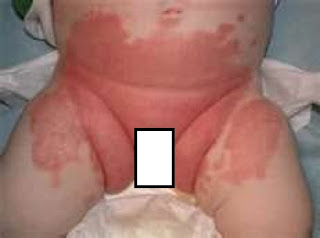The reasons to use mama cloth are very similar to the reasons to cloth diaper. Quite honestly i cannot for the life of me figure out why anyone would switch from soft cotton for your baby or yourself to some unknown bleached, paper-plastic product. Oh did i mention all the chemicals inside tampons, yea those things that actually go INSIDE your body. But i am getting ahead of myself, allow me to explain in full.
 |
| regular tampon vs. organic cotton tampon |
-Harmful ingredients in disposable pads and tampons.
Many women do not realize the amount of chemicals within their store bought disposables, or how they may correlate with gynecological concerns. Disposable pad and tampon companies are not required to list the ingredients on labels. Some irritating or toxic ingredients found in disposables include: aluminum, alcohols, fragrance additives, and hydrocarbons. Tampon bleaching processes leave behind dioxin. Dioxin is a toxic chemical (chlorine-compound) linked to cancer, immune system suppression, ulceration, pelvic inflammatory disease, reduced fertility, changes in hormone levels and endometriosis. Try this simple test: Place a regular tampon in glass of water and return in a few hours. You will find the water cloudy and filled with residue - all things that your body is otherwise absorbing into the soft tissues of the vagina.
-Cost
Cloth pads = Savings:
The money you save using cloth pads will be worth it in the first year alone! Figure you spend $8/month on pads and another $6/month on tampons ~ that is $14/month or $168 a year! You could buy over 20 cloth pads for that amount…and still have them to use for another 4-6 years! That is a savings of $672-1008! I know that I have better things to spend my money on
-Environment
Environmentally, there are two main issues at stake: the impact of production, and the impact disposal. A typical woman can use anywhere between 8,000 to 17,000 tampons in her lifetime. This depends on individual usage of course. I hate to sound cliche here, but every woman is different, and the numbers available are all over the map. Think about it though, a handful of products a month, 12 months a year, for 30 to 40 years, multiplied by the female half of the population… It really does add up. According to the book Flow: The Cultural History of Menstruation, the average woman throws away up to 300 pounds of feminine hygiene related products in a lifetime. In the grand scheme of things this makes up only about 0.5 percent of personal landfill waste. But even so, when you see that there are alternative options available, it becomes difficult to rationalize. In the United States alone, an estimated 12 billion pads and 7 billion tampons are disposed of annually. Each of those tampons and pads has an environmental impact of the waste of not only the product itself, but the packaging, plastic or cardboard applicators, as well as the less visible costs of transportation and production.
 |
| If you can just get over the mental ick factor the decision is just plain obvious |
On average women who switch to mama cloth find that their flows are lighter and they have significantly less cramping each month, I mean really who doesn't want that. All in all, it again comes down to common sense. Which would you really want to wear something that feels dry and velvety soft or something that feels slimy and crunchy. I for one always used disposables because i thought that was my only option. Once i found out about mama cloth i was slightly put off by the idea but after doing the research i have found it to be the logical option not just for comfort but for all of the reasons listed above.
i will be linking up to the pistachio project
































